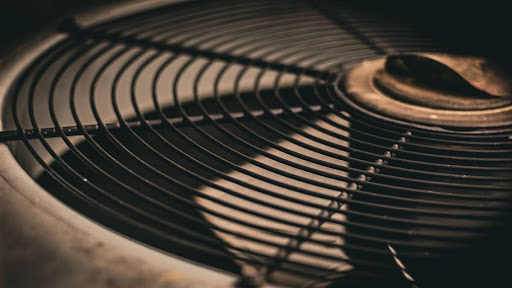You’ve been sweating through another summer, cranking your AC thermostat lower and lower, yet your house still feels like the heat outside. Your energy bills are through the roof, and you’re starting to wonder if your air conditioner is just plain broken.
But what if we told you there’s a secret number hiding on your AC unit that could explain everything? What if this mysterious number could predict exactly how much money you’ll spend cooling your home each month? Meet SEER ratings — the game-changing metric that every homeowner should know but somehow nobody talks about.
What in the World Is a SEER Rating Anyway?
The Seasonal Energy Efficiency Ratio, or SEER, is basically a miles-per-gallon rating for your air conditioner. A higher SEER rating means your AC unit sips electricity. A lower rating means it chugs energy like its last call. This number gives you a clear picture of the unit’s potential for energy conservation over an entire cooling season.
The ratio compares the amount of cooling your AC produces (measured in BTUs) to the amount of energy it consumes (in watt-hours). A higher Seasonal Energy Efficiency Ratio means you get more cool air for your buck. It’s calculated based on performance across an entire season of fluctuating outdoor temperatures, providing a real-world view of its efficiency.
Meet SEER2, the New Sheriff in Town for 2025.
Just when you thought you had it figured out, the powers that be decided to make things a little more interesting. The old SEER test was good, but it happened in a perfect lab setting. The new SEER2 test for 2025 is tougher. It’s designed to factor in real-world issues and scenarios like external static pressure. This gives you a much more accurate picture of how your AC will perform when it’s battling a humid July.
This new testing standard is a big deal for your home’s climate control. An AC unit that was rated 14 SEER under the old test might now be rated 13.4 SEER2. The air conditioner itself didn’t change, but the standards for a good one did. This new number is a more accurate measure of the efficiency you can expect to see reflected on your utility bills.
Why a High SEER Rating Makes You an Expert at Energy Conservation
A high SEER2 rating is all about tangible savings. A modern, high-efficiency unit simply uses less energy to keep your home at the perfect temperature. That means lower monthly electricity bills, leaving more cash in your pocket for things that are actually fun, like a trip to the lake.
Beyond your bank account, choosing a high-efficiency unit is a solid move for the planet. Using less electricity reduces the demand on our power grid. This, in turn, helps lower your home’s carbon footprint and cuts back on the greenhouse gas emissions associated with power generation. You get to be comfortable, save money, and give Mother Nature a little nod of respect all at once.
The Magic Number: What SEER Rating Do You Actually Need Here?
The U.S. government sets minimum efficiency standards, which vary from one location to another. Down south, where air conditioners run nearly year-round, they have a higher minimum. Since we’re up north here in Michigan, the current federal minimum for any new air conditioner installation is 13.4 SEER2 (which is the same as the old 14.0 SEER).
So, 13.4 SEER2 is the starting line. However, opting for a higher rating, such as a 16 or 17 SEER unit, is often a brilliant move. The upfront cost might be a bit more, but the long-term energy savings can really add up over the life of the system, especially during those surprisingly hot and sticky summers we’ve been getting.
My AC Is Old, But It Still Works. Does Upgrading for a Better SEER Rating Really Make a Difference?
We hear this all the time. Your 15-year-old air conditioner might still blow cold air, but it’s likely an energy dinosaur. Many older units have a SEER rating of 10 or even lower. Swapping that clunker for a new 15 SEER2 unit could cut your cooling energy consumption by a shocking amount, sometimes by nearly a third.
New units often feature a variable-speed compressor. Instead of just blasting on and off like your old unit, it can run at lower speeds for longer periods. This keeps the temperature in your house incredibly consistent and does a much better job of pulling humidity out of the air. You get rid of those stuffy, sticky spots and enjoy a perfectly controlled home climate.
A Quick and Dirty Guide to Reading an EnergyGuide Label Like a Pro
When you’re looking at a new appliance, you’ll see a bright yellow tag stuck to it. That’s the EnergyGuide label. It’s your cheat sheet for efficiency. The most important number for an AC unit is the SEER2 rating, displayed big and bold. The label also features a handy sliding scale that indicates the unit’s efficiency level, ranging from least efficient to most efficient.
The best part is the estimated yearly energy cost. This number lets you compare two different models right there in the store or online. You can see, in plain dollars and cents, how much a higher-efficiency unit can save you every single year. It eliminates the guesswork of determining your long-term savings.
Stop Sweating Your Electric Bill and Start Enjoying Your Summer!
All Season Heating & Cooling Mid Michigan can get you set up with a brand-new, high-efficiency air conditioner that will have your home feeling like an oasis. Keep that amazing efficiency going for years by joining our All Seasons Club Plan for regular maintenance. Learn more about SEER ratings when you speak with our HVAC team!

